The coronavirus epidemic has been a nightmare. We can’t lie about that or sugarcoat it. People are losing their jobs, their retirements, their businesses… For many Americans, things are bleak. The best we can do is to help you muddle through. And in this case, that means teaching you how to cook through the quarantine.
Pasta has been very hot during these trying times. Stores are selling out of spaghetti, so folks are experimenting with new shapes. They’re making sauces from scratch. Low carb talk has all but evaporated. F*ck Atkins, amirite?
While pasta is a pretty forgiving dish, it can be bungled. To help you stay on the right path, we asked Italian Pasta chef Michela Tartaglia, chef, founder, and co-owner of Seattle-staple Pasta Casalinga, for some beginner’s pasta-making tips. Check her answers to our most pressing pasta questions below.
What are some of the easiest sauces to make at home?
Well, the easiest is definitely Aglio Olio Peperoncino, the Italian for garlic, olive oil and chili flakes or chili because you can also use a fresh chili.
So you heat up your pan and then you put a bit of garlic. Either cloves of garlic or chopped garlic, but not minced, no minced garlic! So, either the whole cloves or couple of slices you can cut in half, with some olive oil and some chili. And then, you warm that up. You cook your pasta in plenty of hot water. Salt it, and then, you drain your pasta. Then, there you go. This is the classic Italian to-go. Midnights, when you go out and you get back home late and you’re hungry and you’re with friends. It’s a classic. And usually, we make spaghetti with that.
It’s quick and it’s comforting. It has a spice in it and the garlic is not overpowering. Yeah, pepper, black pepper of course. And then, you can add either Pecorino or Parmigiano, if you have it. But everybody can make that.
What should we be using to thicken our homemade sauces, flour?
No flour, absolutely not. When you drain your pasta, you leave a little bit of hot water. Because when the pasta cooks, it has a lot of gluten, the gluten is flour, right? It has some parts of the flour in it. So, you keep it a little bit as you drain, and put a little bit of that water in your sauce. Just a little bit, not too much because it becomes like a soup which is something that you don’t want — the right amount will really help to glue your dish together.
So definitely, leave a little bit of water from the pasta that you cooked with. But not flour.
What should properly cooked pasta taste and feel like when it’s from a box?
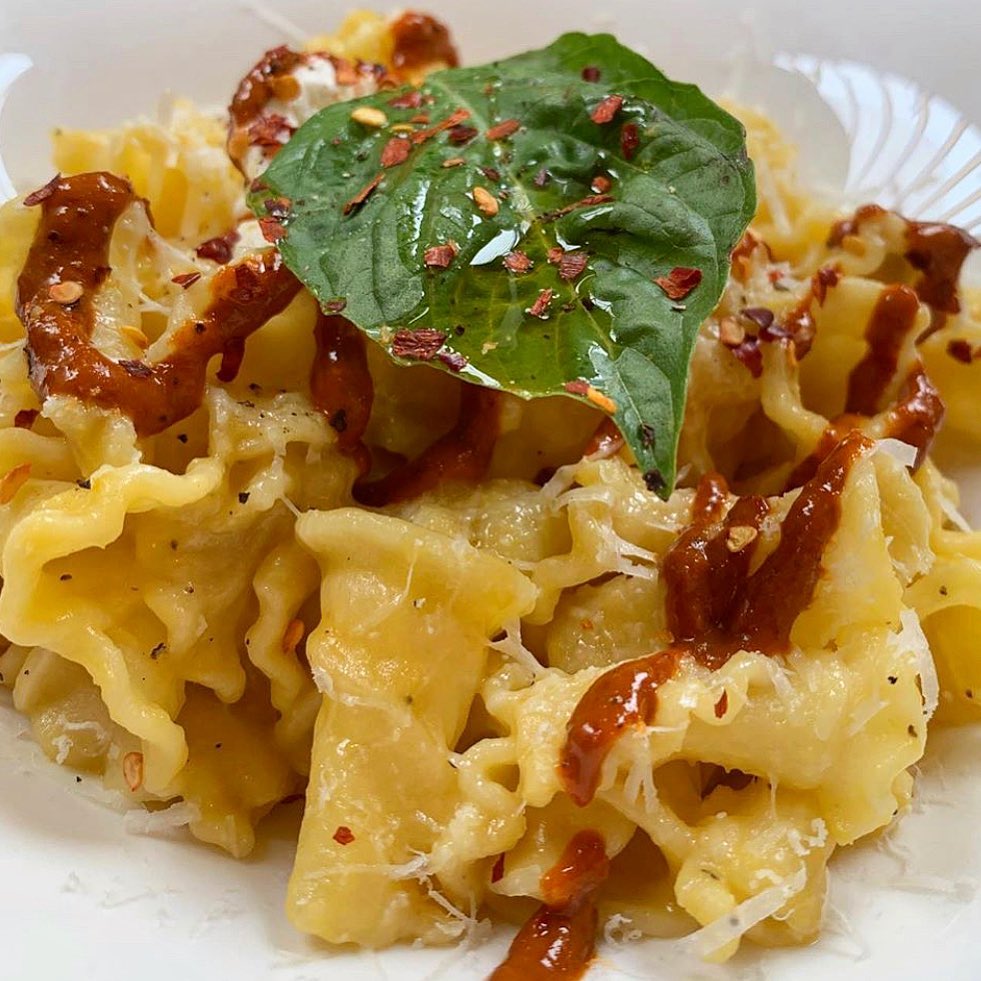
Each shape has a defined time of cooking but the pasta should feel al dente. That means when you drain your pasta, the pasta should be a little bit on the hard side because you need to consider that that pasta is going to keep cooking with the heat of your sauce. So you want to leave the cooking time a little bit behind what the box says because the last thing that you want to have is something that is completely soft. It’ll be mushy, which is not good for you.
Because it’s not a good case and not very good for digesting. It’s so much easier to eat a pasta that is al dente, which means “to the tooth,” it has a little bite in it. It should feel a little hard, but not raw. So it’s something in between.
Another important thing, never cool your pasta under cold water. It’s a big stereotype. You come straight from the hot water. You drain it, and then you put with your sauce.
So you shouldn’t let your pasta sit after its drained?
Absolutely not. Pasta is very similar to pizza, it’s really about timing. It’s pretty easy, but it’s also pretty easy to mess up, and it’s all about time. Because having that overcooked pasta, it’s something like a burnt pizza.
Should we only use certain pasta shapes for certain sauces?
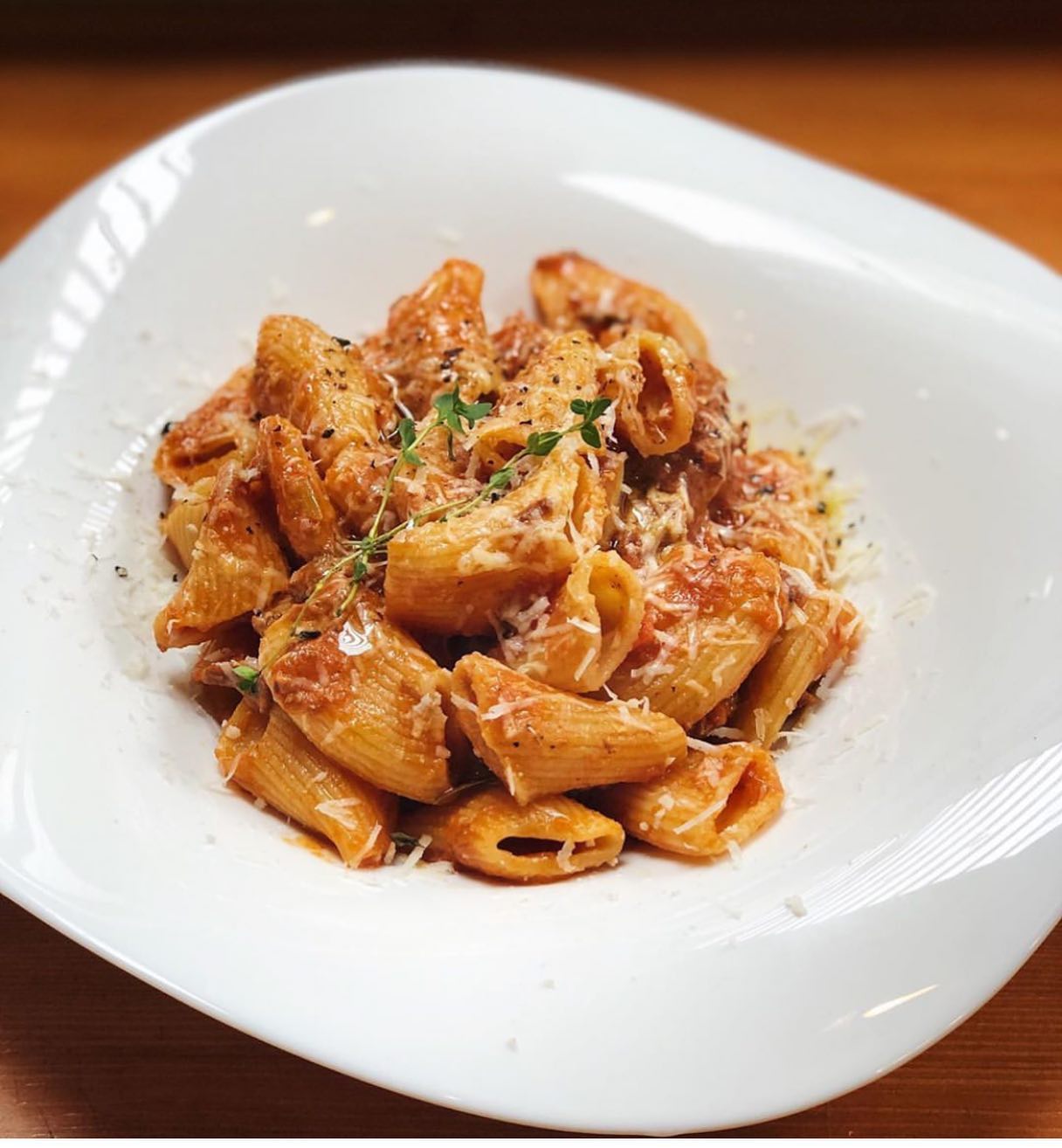
Absolutely, yeah. For example, at Pasta Casalinga, we don’t let our guests choose a shape with a sauce. We choose the shape with a sauce ourselves. For example, a pasta like tortiglioni, or rigatoni will beautifully marry a ragu. The edges of the pasta will go fantastically with a meaty tomato sauce base, but you will never have a ragu with spaghetti, which is like an insult. In Italy, the only thing that we never have is a ragu with spaghetti.
Spaghetti goes with many other things but never with ragu. Why? Simply because all the meat that is there in the pan, in the pot, it doesn’t stick with that kind of pasta. So yes, absolutely, you will have some shapes that go wonderful with certain sauces, and other shapes that don’t. They simply don’t, It’s not even a discussion.
So for example, angel hair will go very well with something very simple, like cheese and a little bit shaved nutmeg on top, but you will never do angel hair with an albacore tuna, eggplants, capers, and meat. It just doesn’t work. It’s like peanut butter and jam — perfect. What about peanut butter and mayonnaise? No. It just doesn’t work.
Should we ever put oil in our boiling pasta water?
Thank you for asking. When we teach cooking classes, this is the number one misconception. It’s just a trick. You put a little bit of olive oil because you have a lot of pasta for a lot of people in a small pot. This is simply a trick that should be used in an emergency. On a daily basis, you should never put olive oil in the pasta. Number one because you don’t want to waste your precious delicious olive oil. Number two, because the pasta will become slippery and then it will not take with the sauce.
How long should we be aiming for to make the perfect Ragu sauce?
It’s not quick. Ragu is something that you make for people that you love or for your guests that you appreciate. The minimum cooking time is four hours. We cook our ragu for about six hours. Six, seven hours. The secret with ragu is that you really need to go slow. You cannot push the time. Putting the flame high simply doesn’t work. A ragu, to be a good ragu, needs carrots, celery, onion, olive oil and time. The wine needs to evaporate. And then really the meat itself to tenderize has to be cooking for a minimum of four hours.
What are some key ingredients that are really important to a meat sauce?
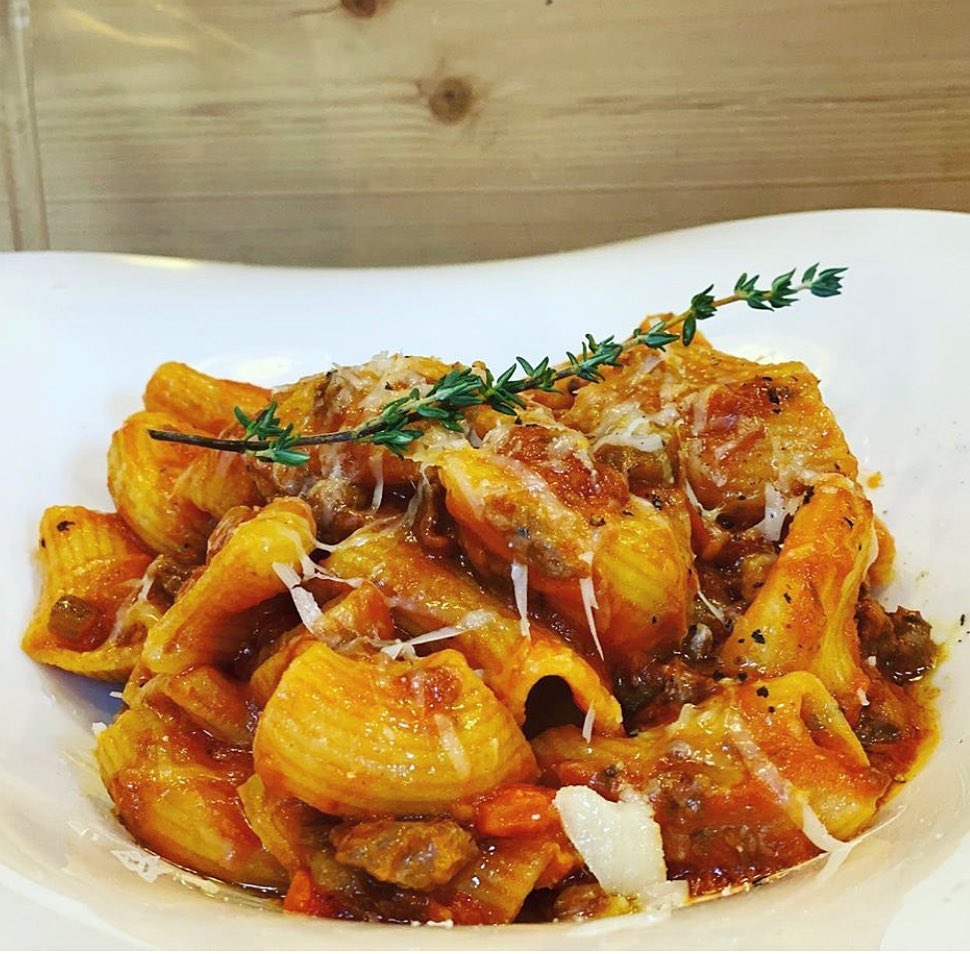
It depends.
Carrots, celery and onions are what we call in Italian, tritato, three triatato. So tritato is carrot, celery, onion, it’s the basics of ragu. So, when you make ragu in a meat sauce, you have the base of these three ingredients.
If you make Sugo, another slowly cooked sauce with meat, it doesn’t have to be by definition the three ingredients as a base. So these herbs and spices, they really depend and vary according to the meat you’re cooking.
If you’re cooking something that is wild, I don’t know, wild game. Wild boar, venison, elk, we love to cook those kinds of meats. A classic combination and perfect addition is definitely juniper berries. We use a lot of those and bay leaves with all of those kinds of meats.
If you make a bolognese sauce, well you need to go nutmeg and pepper, of course.
Right, and I wanted to ask about nutmeg when it comes to Alfredo. Is that something that we should be absolutely putting in or is that kind of-
Yeah, I’m not — I’ve been living in the United States for 13 years and I’m still confused as to what your Alfredo is. I never had it and I’m still… I’m not really sure what it is, so I cannot really answer that question. I’m sorry!
I feel like people kind of gravitate to certain sauces. What would you say is kind of an underrated sauce that you think that the American palate hasn’t really appreciated as much as they maybe should or would like?
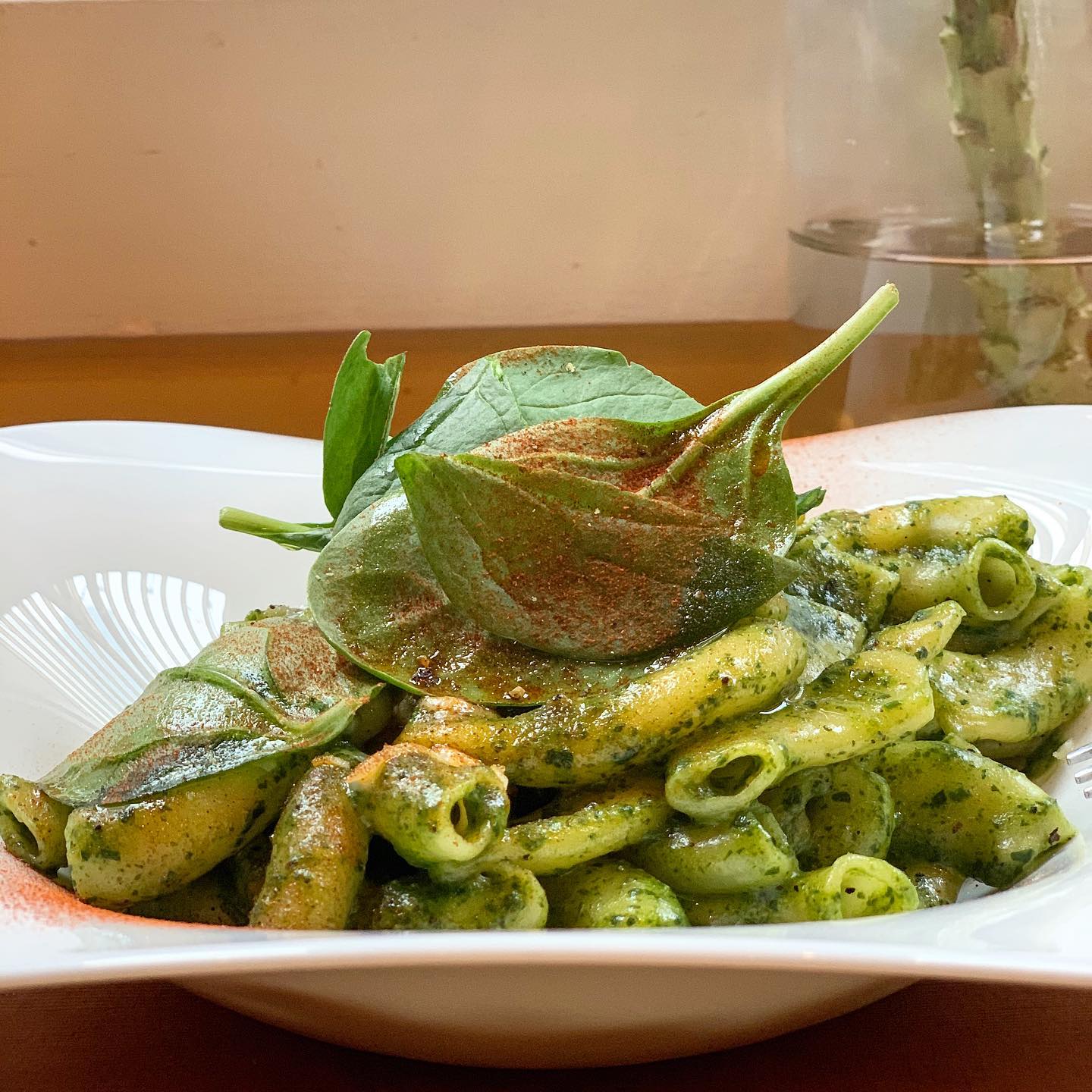
Yeah, I think the underrated, I mean it’s pretty common itself, but not done in the way it should be done is Pomodoro, which is a tomato sauce made right. So made with cloves of garlic, shallots, cloves of garlic. So, not minced garlic or the garlic taste will be overwhelming and crazy. Shallots, oregano and basil. So the Pomodoro sauce as well, it’s the one most comforting thing that a human being can have without cream or without any addition to that.
I think you guys call it marinara sauce, which is something slightly different. The classic tomato sauce that you know, traditionally, if you really want to make right, is you cook it in a terracotta pot. You slow cook in a terracotta pot using premium ingredients or good San Marzano variety tomatoes. It really brings out the flavor of this very simple but great recipe.
I want to talk a bit about “traditional Italian cooking.” I was looking through the Pasta Casalinga menu and noticed you implement a lot of local ingredients in your dishes, lots of Pacific Northwest stuff. Does that ever conflict with the traditional ingredients of Italian cooking or is it more about the ethos behind using what’s available to you and local to you?
Well, Italian cooking has… Because talking about pasta, we do have our traditional dishes as we mentioned, the promodoro. We do have the ragu, the carbonara. We have all of those. But if you imagine a country where they have pasta daily, it’s part of our statement to really cook pasta with whatever is available. So in springtime is the asparagus season, I’m definitely going to make some pasta with asparagus.
It’s July. It’s albacore’s season and I live in a place that has this tuna that is magnificent and wonderful, I’m definitely going to make some spaghetti with albacore. If it’s sea urchin — summertime. So it’s actually something very, very common to make pasta with whatever is available. Think about the fall. In Italy, truffle season between October and January is a big time and this is the time of the year that we have pasta with truffles. We never have pasta with truffles in the summer because we play seasonal and local. So yeah, it’s something completely aligned with who we are.
Have you had to change anything for the American palate that somebody like your grandmother might scoff at?
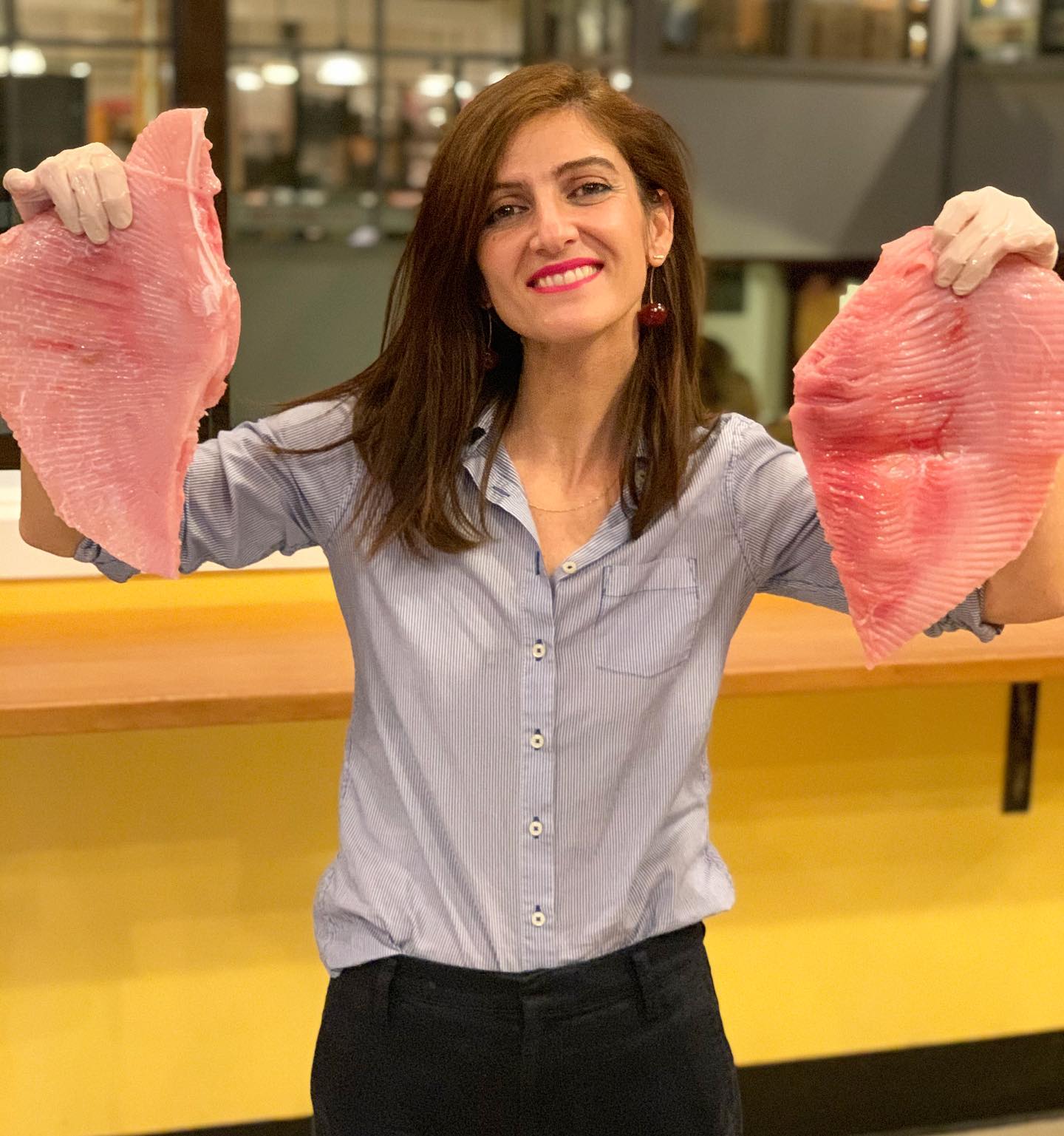
In Italy, we never put cheese on fish. It’s shameful. It’s like swearing very loud in front of a four-year-old. It’s something that really hurts my feelings because you have this beautiful salmon, this beautiful halibut, everything is so beautiful. Fish when it’s so fresh, it’s so clean but it gets dominated when you put Parmigiano pecorino on top of it, it really kills it so you don’t taste the fish anymore. So, we didn’t do it for like a year.
But people often got very upset because we don’t put the cheese on top and sometimes they really want it. And so starting, I think it was six months ago, I decided to… Well, the approach is always to try the way it is. Please, just try this dish with this fish. Skate, I just cleaned this skate. It’s wonderful. Try as it is without cheese. If you’re about to die, and you really want the cheese, we can make it something good happen. And people are very responsive. They really appreciate the educational part, but sometimes here and there, you get the customer that really wants the cheese.
So going back to your question of what I’ve changed — I’m giving you this beep, swear word, cheese, and usually on the side, I never put it on top of the pasta. As long as I don’t see it, it’s fine!







